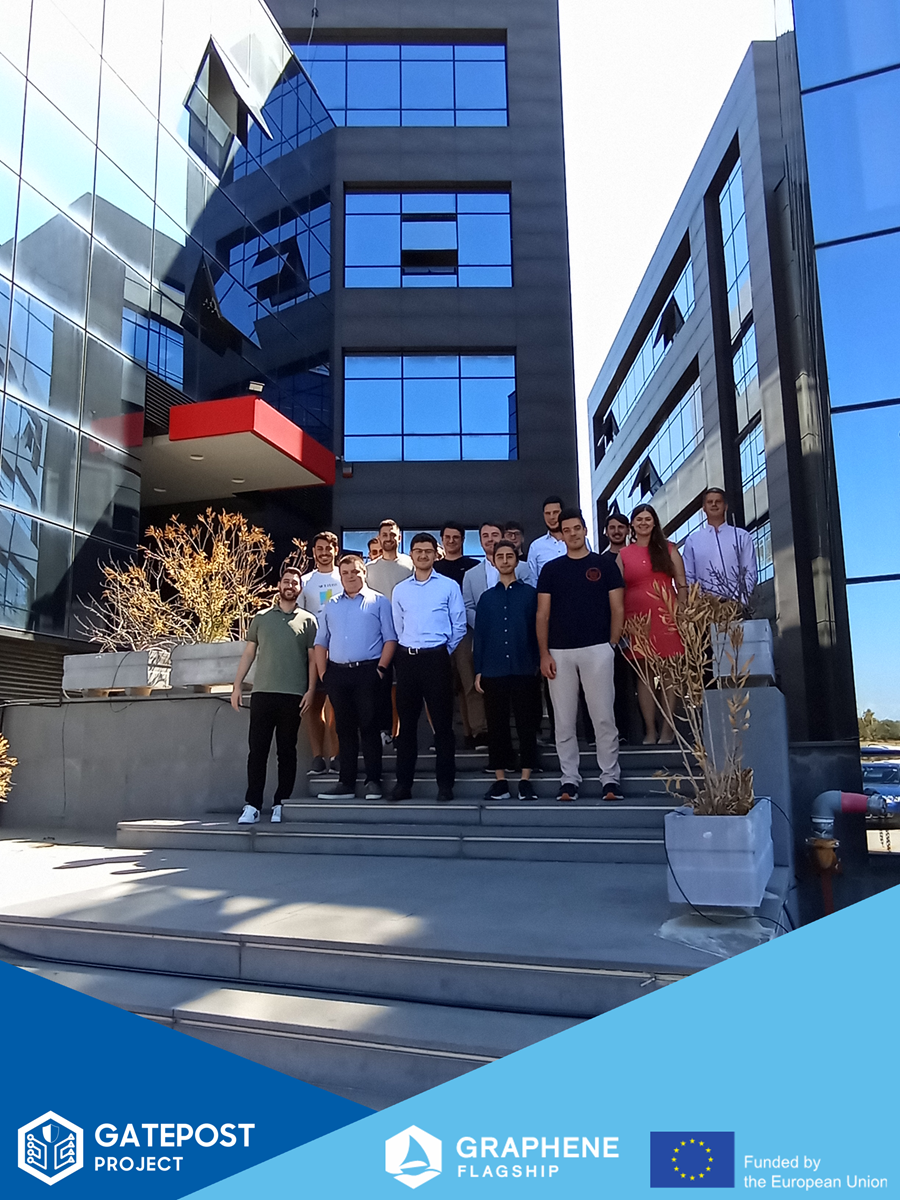GATEPOST project celebrates its first anniversary: Meeting of all eight project partners at the Aristotle University of Thessaloniki
All eight European partners in the GATEPOST project celebrated a particularly pleasing event at the last six-monthly meeting. The project, funded by the European Commission through Horizon Europe, the European Framework Programme for Research and Development, has an ambitious goal. The development and production of a new type of graphene-based chip is intended to turn existing computer technology and IT security upside down and revolutionise them," explained Dr Mindaugas Lukosius of IHP GmbH Leibniz Institute for Innovative Microelectronics and lead partner in the project.
All eight European partners in the GATEPOST project celebrated a particularly pleasing event at the last six-monthly meeting. The project, funded by the European Commission through Horizon Europe, the European Framework Programme for Research and Development, has an ambitious goal. The development and production of a new type of graphene-based chip is intended to turn existing computer technology and IT security upside down and revolutionise them," explained Dr Mindaugas Lukosius of IHP GmbH Leibniz Institute for Innovative Microelectronics and lead partner in the project.
Graphene is a thin, two-dimensional layer of carbon atoms arranged in a hexagonal lattice. It was first described theoretically in 1947 by the Canadian physicist Philip Russell Wallace. In 1962, chemists at the University of Heidelberg reported the production of the thinnest carbon films, which may have contained individual layers of graphene. The discovery of graphene as a conductive and stable material, as it is known to science today, finally took place in 2004. Due to its unique properties, such as its use as a flexible conductor in electronics, the 2D material is considered to have great potential for a wide range of industries and visionary applications.
GATEPOST is taking advantage of this, with experts from industry and academia working together across disciplines on a new graphene-based integrated photonic chip. The GATEPOST project will run for three years, and we are pleased to have achieved important milestones within the first year of the project," said Dr Chis Vagionas of WinPhos, a wireless and photonic systems and networks research group at the Aristotle University of Thessaloniki in Greece.
As the eight project partners from Germany, Belgium, Greece and Switzerland work almost exclusively remotely, the second annual meeting took place at WinPhos in Thessaloniki. The meeting was used to review the progress of the project over the last few months and to discuss the next steps. Dr Lukosius from IHP in Frankfurt (Oder) reported on his team's current efforts to integrate graphene into the IHP pilot line. He also informed the project consortium about the process of manufacturing graphene-based proof-of-concept devices at IHP.
Theodoros Moschos of the WinPhoS research group presented the development of a 20 GHz silicon-integrated optical ternary content-addressable memory (CAM) cell for fast packet inspection and content comparison data operations, which was also recently published at OFC 2024 in San Diego, USA.
Finally, Matej Hejda from Brussels-based HPE gave the project partners an insight into the development of a simulator ecosystem that will enable the rapid and accurate investigation of how to optimise photonic acceleration architectures. This will be used to detect DDoS cyber-attacks using machine learning (ML) - one of the goals of our project, where DDoS stands for Distributed Denial of Services," explained the HPE project team.
The project meeting also discussed this year's Graphene Week, which will take place in Prague from 14 to 18 October and is one of the largest European events focusing on graphene and other 2D materials, organised annually by the Graphene Flagship. We are looking forward to co-hosting a workshop on 2D materials for photonic applications with the 2D NeuralVision project," added Dr Lukosius.
In addition to the project content, the plenary session also included a tour of the premises. The WinPhos team showed the guests around their workshops and laboratories, where the project partners were able to gain an insight into other WinPhos funded projects. WinPhos is located at the Centre for Interdisciplinary Research and Innovation, which serves as an interdisciplinary research environment for the Departments of Physics, Computer Science and Computer Engineering at the Aristotle University of Thessaloniki," explained Chris Vagionas, who hosted the second bi-annual meeting on behalf of WinPhos.

Project team with 8 European partners from science and industry celebrates the first successful year of the GATEPOST project.




